
Svendborg is a town on the island of Funen in south-central Denmark, and the seat of Svendborg Municipality. With a population of 27,521, Svendborg is Funen's second largest city. In 2000 Svendborg was declared "Town of the year" in Denmark, and in 2003 it celebrated its 750th anniversary as a market town. By road, Svendborg is located 195 kilometres (121 mi) southwest of Copenhagen, 183 kilometres (114 mi) south of Aarhus, 44.2 kilometres (27.5 mi) south of Odense, and 28.5 kilometres (17.7 mi) east of Faaborg.
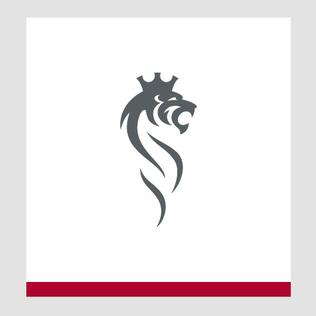
Scandinavian Tobacco Group is a manufacturer of cigars and traditional pipe tobacco. The city company is headquartered in Copenhagen, Denmark, and is a publicly listed Company on Nasdaq Copenhagen.
Events from the year 1736 in Denmark.

Søndre and Nordre Fasanvej are two streets that form a lengthy south-to-north artery through Frederiksberg, an independent municipality surrounded by the larger Copenhagen Municipality in Copenhagen, Denmark. The southern part of the street is characterized by large green spaces and attractive residential neighborhoods. In contrast, its northern part, extending into the Nørrebro and North-West districts of Copenhagen, is marked by former industrial sites. The street is named after Fasangården, a former royal pheasantry located in Frederiksberg Park.

C.W. Obel is a former Danish tobacco manufacturing company which now serves as an investment company fully owned by the foundation Det Obelske Familiefond. Its activities comprise real estate and private equity investments as well as partial ownership of Scandinavian Tobacco Company, Tivoli A/S and Fritz Hansen through Skandinavisk Holding A/S.
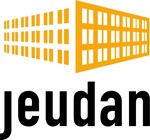
Jeudan is the largest listed real estate company in Denmark. It is the largest private real estate investment company in the country and its activities also comprise property and facility management. The company is headquartered in Prince William Mansion in Copenhagen.
Augustinus Fonden is a Danish foundation based in Copenhagen, Denmark. It was created in 1942 by the owners of Chr. Augustinus Fabrikker, one of the three predecessor companies of Scandinavian Tobacco Group. Chr. Augustinus Fabrikker is now fully owned by the foundation and serves as a holding company of its investments.

Vestergade is a street in central Copenhagen, Denmark, linking Gammeltorv in the northeast with the City Hall Square in the southwest. The street defines the southern boundary of Copenhagen's Latin Quarter. Most of the buildings in the street date from the years after the Copenhagen Fire of 1795.
The Hans Just Group is a distributor of wine and alcohol in the Nordic countries. The group consists of Hans Just A/S in Denmark, Nigab AB in Sweden, Robert Prizelius AS in Norway, Beverage Partners Finland OY in Finland and BJC Distribution Z O.O. in Poland.
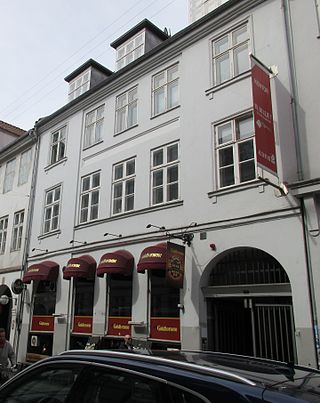
Vestergade 20 is a Neoclassical property in the Latin Quarter of Copenhagen, Denmark. The building was operated as a guesthouse under the name Vinkanden and the name was later changed to Dannebrog. The current building was constructed after the Copenhagen Fire of 1795. It housed J. E. Felumb's piano factory from 1882. It was listed on the Danish registry of protected buildings and places in 1939.
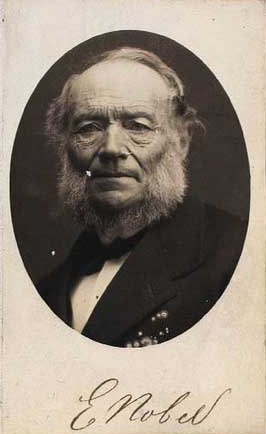
E. Nobel was a tobacco company based in Copenhagen, Denmark.

Carl Lund was a Danish industrialist. He was the founder of Carl Lunds Fabrikker. Carl Lunds Vej on Amager in Copenhagen is named after him.

Louis Meyer was a Danish businessman. His company, Beckett & Meyer, a wholesale company, was after his death continued by his son Ernst Meyer.
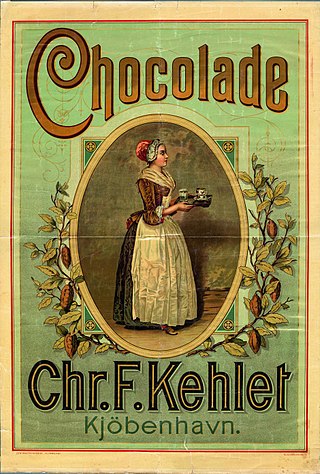
Christian F. Kehlet was a Danish chocolate company based in Copenhagen, Denmark. The company was from 1873 based at Jagtvej 83-85 in Nørrebro. It was merged with Brødrene Cloëtta in 1929 and the factory on Jagtvej closed the following year.

Ny Vestergade 11 is an 18th-century building located across the street from the main entrance to the National Museum in central Copenhagen, Denmark. The University of Copenhagen the building in 1857 and it was subsequently adapted for use as a new Chemical Laboratory. It was later home to August Krogh's Laboratory of Animal Laboratory between 1910 and 1928. He and his wife, Marie Krogh, who was part of his staff, had an apartment in the building. A plaque on the facade commemorates that August Krogh lived in the building when he was awarded the Nobel Prise in 1920. The building was listed in the Danish Registry of Protected Buildings and Places in 1932.
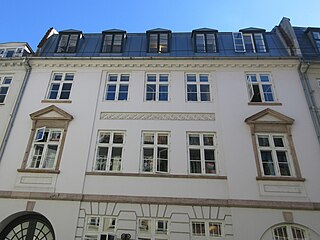
Vestergade 5 is a Neoclassical property in the Old Town of Copenhagen, Denmark. The building was constructed for the owner of the tobacco manufacturer Chr. Augustinus Fabrikker in 1797 and the company was until 1870 based in the complex. It was listed in the Danish registry of protected buildings and places in 1918.
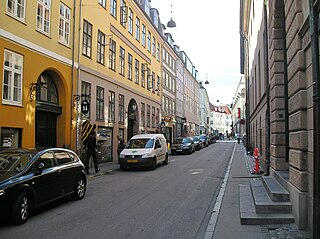
Kattesundet is a side street to the shopping street Strøget in the Old Town of Copenhagen, Denmark. It runs from Vestergade in the northwest to Lavendelstræde-Slutterigade in the southeast, linking Larsbjørnsstræde with Hestemøllestræde. The buildings that line the southwest side of the street all date from the years after the Copenhagen Fire of 1795. Six of them, No. 2 and No. 10-18, are listed in the Danish registry of protected buildings and places. The other side of the street is dominated by the rear side of Copenhagen Court House and the Anton Rosen Jugendstil Metropol Building from 1908.
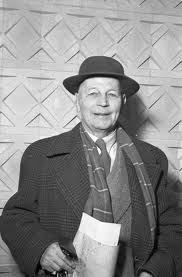
Bent Helweg-Møller was a Danish architect. His works include the listed Villa Vendle in Tisvilde (1911) and Svane Apotek (1934) in Copenhagen as well as the Berlingske Building in Copenhagen and an extension of Odense City Hall in Odense. He has also renovated a number of historic properties, including the Niels Brock House and Heering House on Christianshavn and Klostergården on Amagertorv in Copenhagen.

A. Søeborg's Fabrikker was a confectionery company founded in 1849 in Copenhagen, Denmark. It was acquired by Brdr. Metz in 1953 and discontinued as an independent brand in 1963. Its factory was from 1880 located at Jagtvej 95 in Nørrebro.

Vestergade 15 is a Neoclassical property situated at the corner of Vestergade and Kattesundet in central Copenhagen, Denmark. The building was listed in the Danish registry of protected buildings and places in 1918. Notable former residents include the Icelandic-Danish lawyer Brynjólfur Pétursson.


















